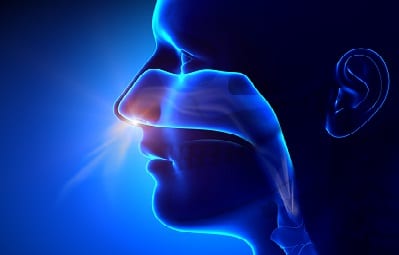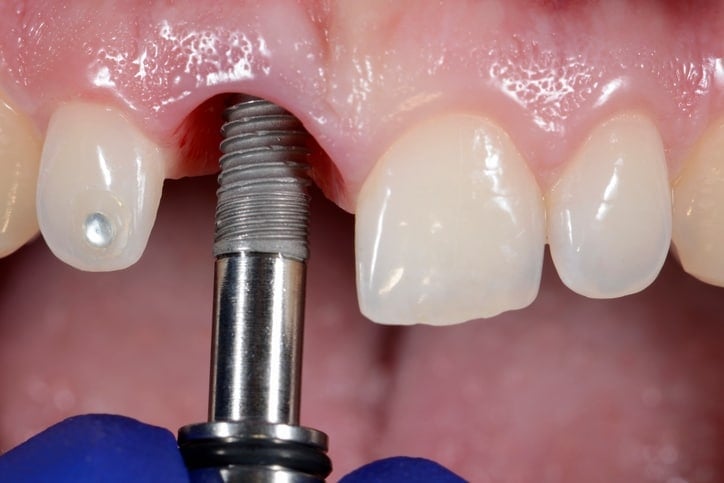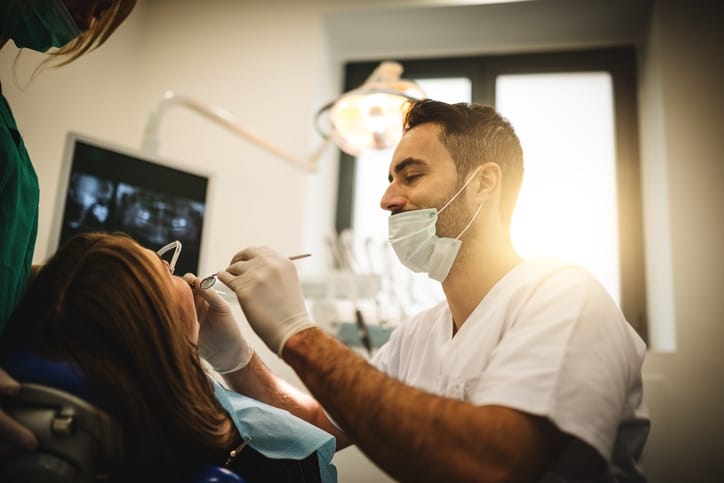 Luckily there is a procedure known as a sinus lift, similar to bone grafting, which can help patients with a large sinus cavity to still receive dental implants in this part of their mouth.
Luckily there is a procedure known as a sinus lift, similar to bone grafting, which can help patients with a large sinus cavity to still receive dental implants in this part of their mouth.
Why may a sinus lift be required for dental implants?
A sinus lift may be required prior to placing dental implants to replace molars or premolars in the upper jaw for several reason, especially if:- The patient’s sinus is larger than normal meaning there is not enough bone height between the upper jaw and the sinus cavity.
- The patient’s bone density at the back of the upper jaw is not strong enough to support dental implants, which can be a result of bone loss after tooth loss or even from the patient’s genetics.
 In either of these cases, placing a dental implant in this part of the mouth without performing a sinus lift beforehand can lead to serious complications. For example, the dental implant may go right through the jawbone and enter the sinus cavity. In this case there is a much higher chance of the implant becoming loose or causing a sinus infection.
In either of these cases, placing a dental implant in this part of the mouth without performing a sinus lift beforehand can lead to serious complications. For example, the dental implant may go right through the jawbone and enter the sinus cavity. In this case there is a much higher chance of the implant becoming loose or causing a sinus infection.
What is the purpose of a sinus lift?
In the scenarios described above, a sinus lift procedure will increase the bone height at the back of the upper jaw creating a thicker jawbone for the implant to anchor into. While doing this, the sinus membrane will also be lifted, effectively making the patient’s sinus cavity smaller. This will eliminate the risk of the implant penetrating the sinus cavity, significantly reducing the chance of the implant coming loose or a sinus infection from occurring.How is a sinus lift performed?
In order to perform a sinus lift, your dental surgeon will begin by cutting the gum tissue where your molar or premolar used to be, and where the implant will be placed. The jawbone is then carefully cut open until the sinus membrane is exposed. Once this happens, the surgeon will then gently push the sinus membrane upwards, effectively creating a void between the upper jawbone and the sinus cavity. The size of this void will depend on how much bone structure needs to be added for the dental implant to be safely placed. Once this void is created, your surgeon will place bone or bone like material into this empty area, similar to how they would perform a bone grafting procedure. After the void is filled with bone material, the gum tissue will be stitched back together in order to allow the bone to heal, which can take anywhere from 4 to 9 months.
The size of this void will depend on how much bone structure needs to be added for the dental implant to be safely placed. Once this void is created, your surgeon will place bone or bone like material into this empty area, similar to how they would perform a bone grafting procedure. After the void is filled with bone material, the gum tissue will be stitched back together in order to allow the bone to heal, which can take anywhere from 4 to 9 months.
Are there any risks of getting a sinus lift?
As with any other surgical procedure, there are some risks involved with getting a sinus lift procedure performed. The main risk is that the sinus membrane is punctured or torn during the procedure which can lead to infection if not properly taken care of. In this case, your dentist should immediately stitch the torn membrane back together so that the sinus lift procedure can be completed without further complications. After getting a sinus lift, your surgeon will give you specific instructions to follow in order for it to heal properly. They should also give you specific instructions of what to look out for. In any cae, contact your dentist right away if you notice any of the following:- Any swelling or pain in the area that gets worse a few days after the procedure
- Bleeding that persists more than 2 days after the procedure
- You feel that the implanted bone structure becomes loose after sneezing or blowing your nose abruptly
- You notice that you are developing fever after the procedure